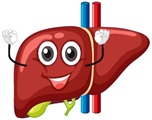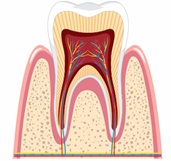Body Organs and Their Functioning
1) When We Are Injured, It Starts Bleeding, but After Some Time, the Bleeding Stops. How Does It Happen?
- Blood comprises various cells which perform different functions.
- Platelets in blood help to clot and make a dense covering at the site of injury to reduce the blood loss from our body which may otherwise prove fatal.
2) When We Touch Our Chest Part, It Feels Hard and Bony, but Why Not the Abdomen Part Feels the Same?
- The structure of particular bones protects the chest part (thoracic region) called the rib cage.
- A bony rib cage protects the heart and lungs and allows these organs to contract and relax.
- No such bony structure is present in the abdominal region; hence we do not feel any hardness there.
3) What Is the Function of the Liver in the Human Body?
- The liver plays an essential role in the digestion of fats.
- The blood circulated through the liver undergoes key processes like removing unwanted substances, regulating blood sugar levels, releasing nutrients or enzymes required by the body,

4) Why Do Kids Have Less Number of Teeth Than Adults?
- Kids start developing their teeth after the age of 7-8 months and develop their primary teeth up to the age of 3 years.
- Until now, the buccal cavity is not big enough to develop other teeth.
- As children grow, the buccal cavity size increases, enabling it to accommodate 32 permanent teeth.
5) It Does Not Pain When We Brush Our Teeth. Then Why Does It Pain Badly While the Dentist Cleans Them?
- Teeth are dead and the hardest part of our body. But like hair and nails, the roots of the teeth are connected to the nervous system and blood vessels.
- When the germs reach the root part of the teeth, we feel pain.
- So, while the dentist cleans the teeth, we feel pain as the instruments reach the root of our teeth, where we can feel sensations.

6) What Connects Bones and Muscles Together? How Are Bones Attached to the Other Bones?
- Bones are attached to the other bones and muscles with the help of connective tissues.
- The ligaments join bones to bones.
- The tendons join muscle to bone.
Share

